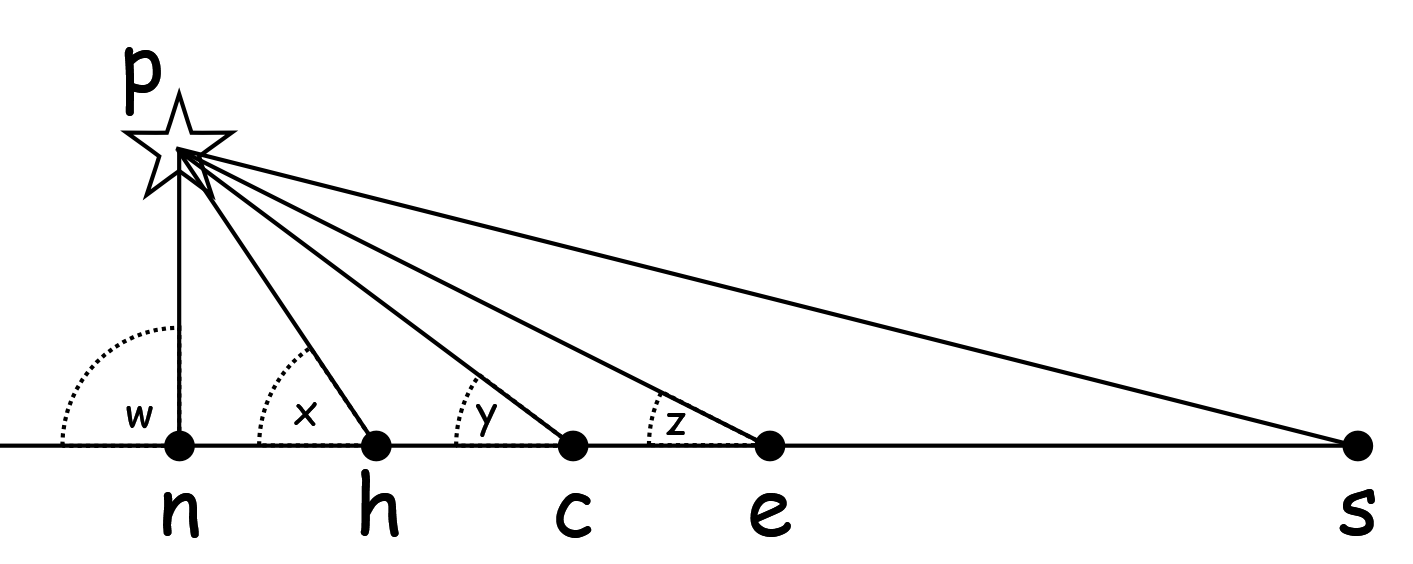| Location | n | h | c | e | s | n-h | h-c | c-e |
|---|
| Distance from n(Km) | 0 | 3333 | 6667 | 10000 | 20000 | | | |
| | w | x | y | z | (s) | w-x | x-y | y-z |
|---|
| Round Earth Angles |
| | 90.0 | 60.0 | 30.0 | 00.0 | | 30.0 | 30.0 | 30.0 |
| Flat Earth Angles |
| Distance to Polaris: 5000Km | 90.0 | 56.3 | 36.9 | 26.6 | 14.0 | 33.7 | 19.4 | 10.3 |
| Distance to Polaris: 8000Km | 90.0 | 67.4 | 50.2 | 38.7 | 21.8 | 22.6 | 17.2 | 11.5 |
| Distance to Polaris: 10000Km | 90.0 | 71.6 | 56.3 | 45.0 | 26.6 | 18.4 | 15.3 | 11.3 |
| Distance to Polaris: 100000Km | 90.0 | 88.1 | 86.2 | 84.3 | 78.7 | 1.9 | 1.9 | 1.9 | |
| Distance to Polaris: 1000000Km | 90.0 | 89.8 | 89.6 | 89.4 | 88.9 | 0.2 | 0.2 | 0.2 | |
| Distance to Polaris: 10000000Km | 90.0 | 89.9 | 89.9 | 89.9 | 89.9 | 0.0 | 0.0 | 0.0 | |

